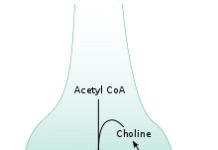This type of breast cancer accounts for about one in five new cases in the United States.
Ductal carcinoma in situ (DCIS), also called intraductal carcinoma, is a common type of breast cancer.
Carcinoma means "cancer," and in situ means "in the original place."
DCIS begins in the cells of the milk ducts, where the cells lining the ducts have changed to look like cancer cells.
A diagnosis of DCIS means that the cells have not spread through the walls of the ducts into the surrounding breast tissue.
However, DCIS can turn into more invasive forms of cancer. Doctors don't have any way of knowing for sure which cases of DCIS will turn into invasive cancers and which ones won't.
About one in five new breast cancer cases are DCIS, reports the American Cancer Society.
The good news is that DCIS is very treatable – but if it's left untreated or undetected, it can spread to other areas of the breast.
Causes of DCIS
DCIS forms when genetic mutations occur in the DNA of breast duct cells, causing the cells to become abnormal.
However, these cells do not spread beyond the breast duct.
While it's not known exactly what causes the abnormal cell growth that leads to DCIS, researchers believe it's most likely due to a combination of inherited genes, lifestyle, and environmental factors.
Symptoms of DCIS
Most of the time, this form of breast cancer does not show any symptoms.
Therefore, DCIS is often discovered in a mammogram.
However, DCIS can sometimes cause a breast lump or bloody nipple discharge.
Diagnosis of DCIS
A mammogram usually provides the first indication of the presence of DCIS.
If this form of cancer is found, the image usually shows small clusters of calcifications that have irregular shapes and sizes.
These clusters can be DCIS or atypical ductal hyperplasia (ADH). ADH is not a form of breast cancer, but rather a risk factor for developing breast cancer in the future.
In some cases, the clusters could indicate invasive breast cancer.
To determine what the clusters are, your doctor will most likely recommend a biopsy (removal of a small piece of tissue that is sent to a lab for analysis).
Treatment of DCIS
The following are potential treatments for DCIS:
Lumpectomy with radiation therapy: A lumpectomy, which removes only the portion of your breast where the cancer is located, followed by radiation treatment is successful for most people with DCIS.
Mastectomy: If you have extensive DCIS (in which several ducts and quadrants of the breast are affected), or if noninvasive breast cancer is found in several areas throughout your breast, your doctor may recommend a mastectomy, in which the entire breast is removed.
Hormone therapy: This treatment, which may be recommended to slow or stop the growth of hormone-sensitive tumors, works by interfering with the body's ability to produce or use hormones.
Chemotherapy: Since DCIS is noninvasive, chemotherapy is usually not needed.
Most Recent in DCIS
Your Ultimate Mastectomy Buying Guide: Pre-Surgery and Post-Surgery Essentials


Breast Cancer Screening 101: How to Navigate Through Your Options


How an App-Controlled Warming Wearable Is Helping Mastectomy Patients


New Directions: What Innovations Are Coming Down the Pike for Breast Cancer?




Editorial Sources and Fact-Checking
- Breast Cancer; National Cancer Institute.
- Ductal Carcinoma in Situ (DCIS); Johns Hopkins Medicine.
- Ductal carcinoma in Situ (DCIS); Mayo Clinic.
- Atypical Ductal Hyperplasia (ADH); Johns Hopkins Medicine.











































